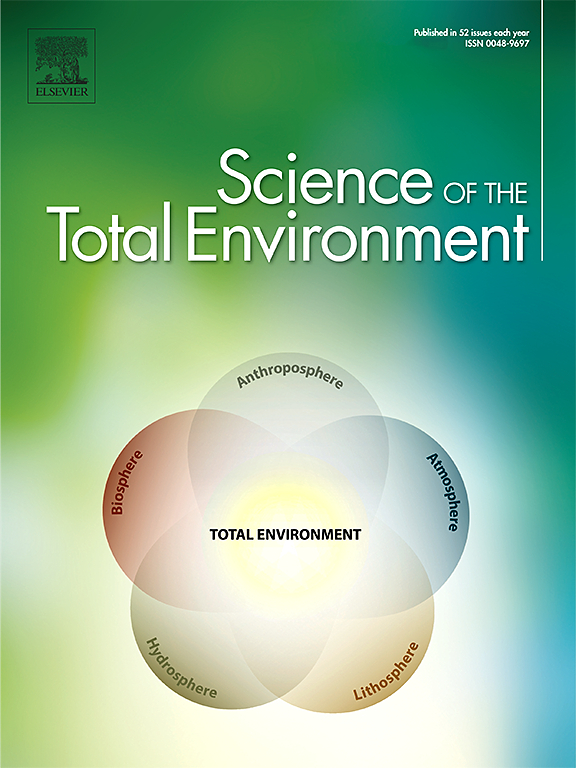Marine food web trophic interaction of trace elements and stable isotopes of carbon and nitrogen in Rabigh lagoon, Red Sea, Saudi Arabia
IF 8.2
1区 环境科学与生态学
Q1 ENVIRONMENTAL SCIENCES
引用次数: 0
Abstract
The increase in heavy metal pollution in mangrove ecosystems due to anthropogenic activities has been on the increase and has been studied previously. However, there is a need for a better understanding of the use of stable isotopes of carbon (δ13C) and nitrogen (δ15N) to establish trophic levels (TL) and their contamination in the food web. In this study, samples of sediment, mangrove, algae, seagrasses, crustacean, poriferans, echinoderms, molluscs, cnidarian and fishes were collected for determination of trace elements (Fe, Mn, Cu, Zn, Cd, Cr, Pb, Ni and Co) and stable isotopes. Varian 720-ES inductively coupled plasma-optical emission spectrometer (ICP-OES) and Thermo elementary analyser–ConFlo IV–Delta V Advantage mass spectrometer were used for the analysis of metals and stable isotopes respectively. The food web structure of Rabigh lagoon mangrove comprises a group of organisms such as crustacean (crab), porifera (sponges), echinoderm (starfish), mollusc (aquatic snails) and cnidarian (coral) in the second trophic level (TL = 1.0–2.0). For the third trophic level (TL = 2–3), Platycephalus bassensis (TL = 2.96) and Scomber sp. (TL = 2.30) belonging to the taxonomic group fishes are the two organisms in this trophic level. However, from the 9 trace elements determined, only Cd and Pb recorded excessive bioconcentration in the species. In terms of Total Magnification Factor (TMF) and metal concentrations, there was significant biodilution of all trace elements determined in this study except for Pb (TMF = 0.72; p > 0.05) and Co across the extracted food web consisting of molluscs, crustacean and fishes. Biodilution of Pb was not significant across the trophic levels of the food web. This study provides baseline information on the food web structure and transfer of trace elements across the food web of Rabigh mangrove, Red Sea, Saudi Arabia.

求助全文
约1分钟内获得全文
求助全文
来源期刊

Science of the Total Environment
环境科学-环境科学
CiteScore
17.60
自引率
10.20%
发文量
8726
审稿时长
2.4 months
期刊介绍:
The Science of the Total Environment is an international journal dedicated to scientific research on the environment and its interaction with humanity. It covers a wide range of disciplines and seeks to publish innovative, hypothesis-driven, and impactful research that explores the entire environment, including the atmosphere, lithosphere, hydrosphere, biosphere, and anthroposphere.
The journal's updated Aims & Scope emphasizes the importance of interdisciplinary environmental research with broad impact. Priority is given to studies that advance fundamental understanding and explore the interconnectedness of multiple environmental spheres. Field studies are preferred, while laboratory experiments must demonstrate significant methodological advancements or mechanistic insights with direct relevance to the environment.
 求助内容:
求助内容: 应助结果提醒方式:
应助结果提醒方式:


